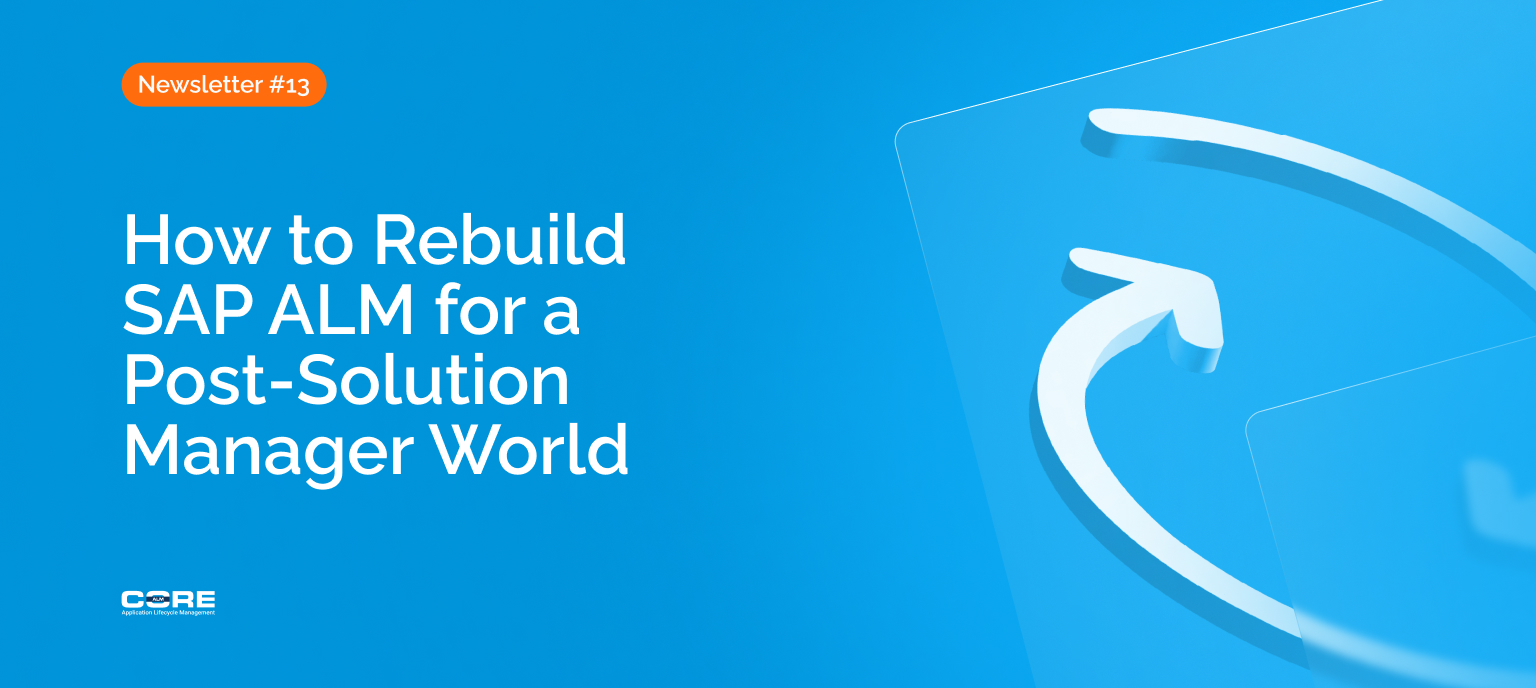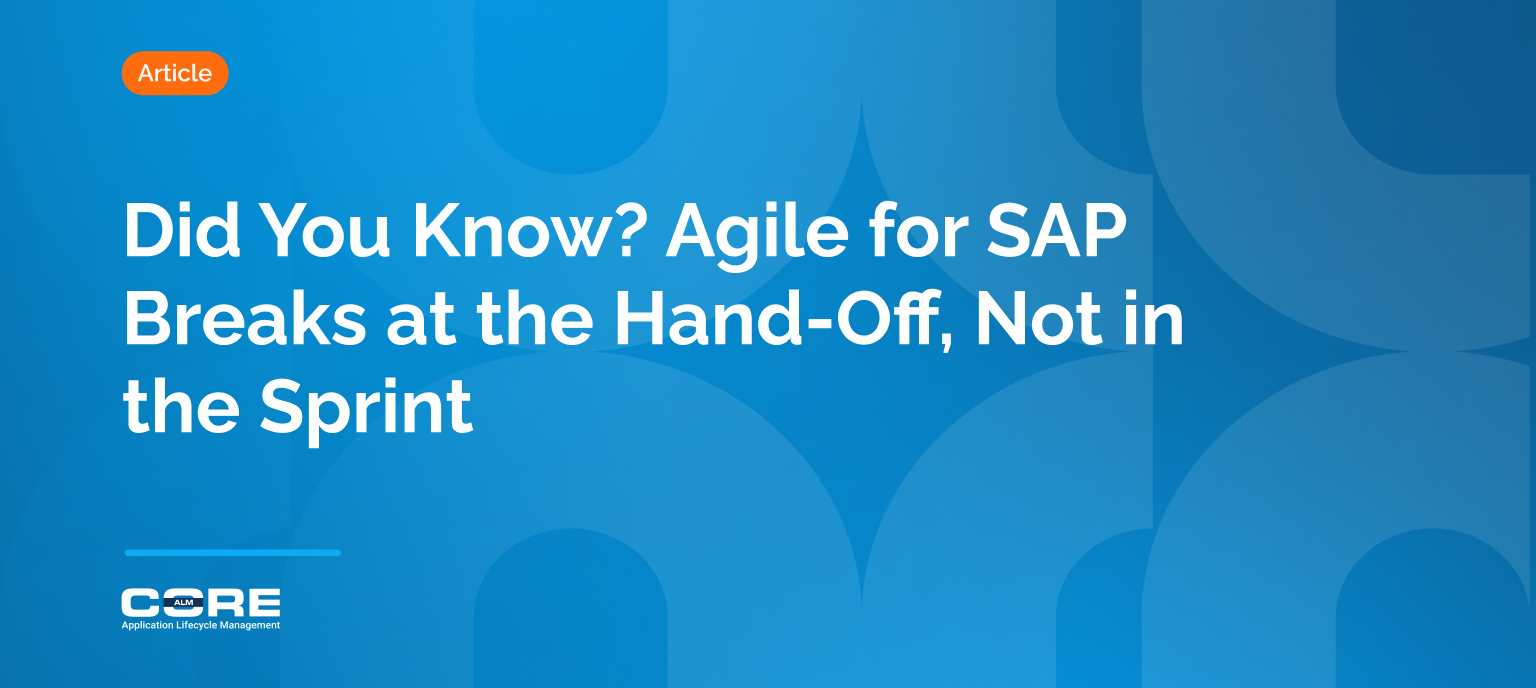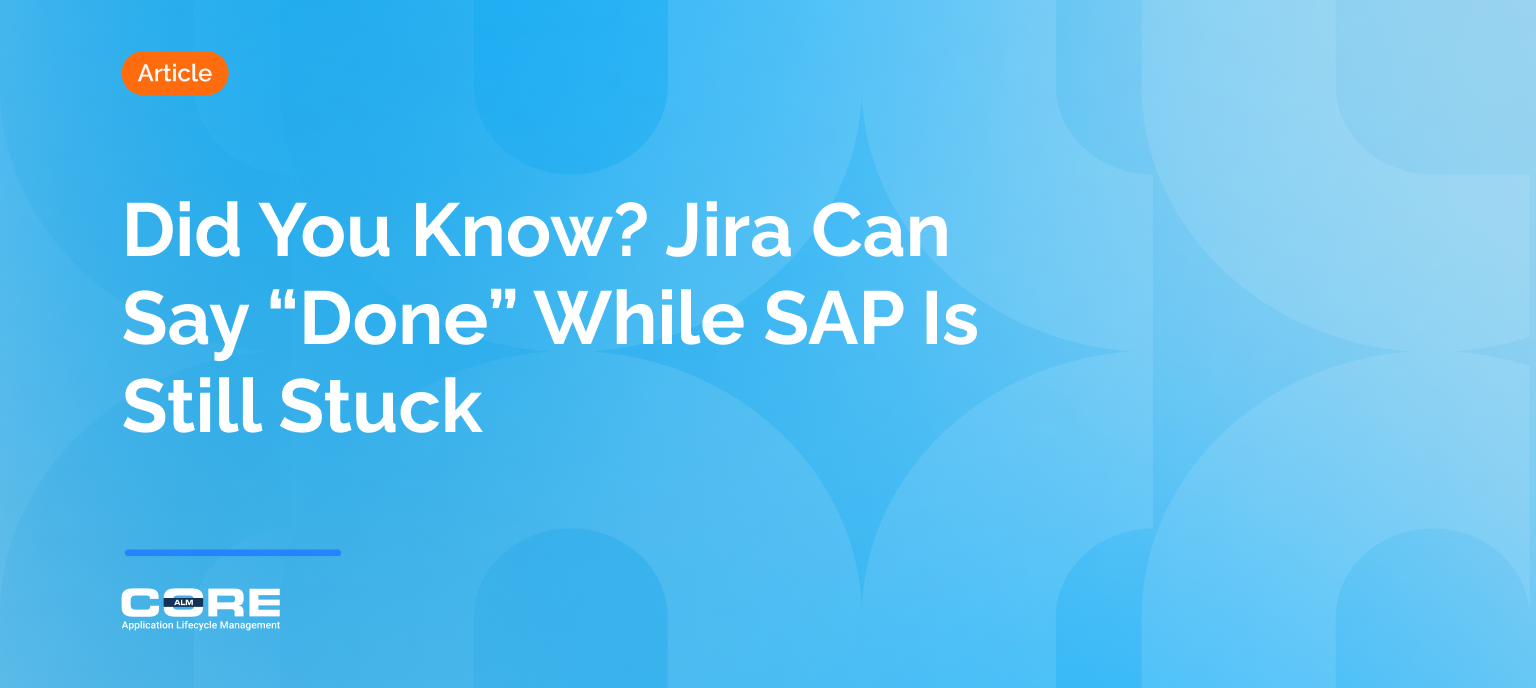Why the future of ALM is bigger than SAP
SAP Solution Manager’s retirement is a milestone — but the real opportunity isn’t just replacing its functions. It’s rethinking how your entire enterprise manages change.
For years, Solution Manager (SolMan) was the single home for orchestrating SAP change — requirements, testing, transports, monitoring. But its architecture reflected a different era, before Agile, DevOps, and hybrid cloud. Now that mainstream support ends in 2027, organizations can either replicate yesterday’s processes or redesign for today’s reality: a landscape where SAP is core, but far from alone.
Enterprise applications include CRM systems, custom-built web services, mobile apps, and many more. And every change competes for the same budget, resources, and timelines. CIOs and IT leaders now have a rare moment to unify those workflows — aligning SAP and non-SAP change into one enterprise-wide process. When achieved, this ensures that every change is connected to the business strategy, and delivers the expected outcomes.
Why the future of ALM is bigger than SAP
From Silos of Change to an Enterprise Value Stream
One flow from business intent to operational impact
In most enterprises, SAP and non-SAP change still run on separate tracks. Requirements might be captured in Signavio or Jira, development spread across internal teams and global partners, with SAP transports processed through one set of approvals while other applications follow entirely different workflows. Monitoring and feedback loop back into their own silos.
That fragmentation slows delivery, increases audit complexity, and makes enterprise agility nearly impossible. A value-stream approach fixes that — tracking every change from business intent to operational impact across every system in the landscape.
It also opens the door to shift-left quality controls. Imagine triggering automated tests, security scans, or code analysis the moment a change is ready — whether that’s an SAP transport or a microservice update — before it ever risks production stability.
One flow from business intent to operational impact
The Role (and Limits) of SAP Cloud ALM
Cloud-native orchestration for SAP, extended across the enterprise
SAP Cloud ALM is SAP’s modern, cloud-native hub for project orchestration, offering capabilities for requirement tracking, test coordination, and both business process and technical monitoring. It integrates with SAP Signavio for process modeling and Tricentis for automated testing, and can document, assign, and track work effectively for SAP-centric projects.
With CoreALM’s Cloud ALM integration for Jira, Azure DevOps, and ServiceNow, you can keep requirements, tasks, and status in sync across all systems. Developers and functional configurators stay in the tools they know, while SAP leaders see a unified picture in Cloud ALM.
However, Cloud ALM’s transport management capabilities are intentionally lightweight. It lacks advanced workflows and ChaRM-like features such as transport sequencing, mass approvals, automated retrofit, and downgrade protection — capabilities essential for complex SAP landscapes or hybrid release trains that involve multiple systems.
Cloud-native orchestration for SAP, extended across the enterprise
Bridging the Gaps with a Hybrid ALM Architecture
The best of SAP orchestration and enterprise-grade governance
The answer is a hybrid architecture that combines Cloud ALM’s orchestration with an enterprise-grade transport management layer — integrated not only with SAP but also with your other delivery tools.
For robust transport governance, CoreALM’s SAP transport management for ServiceNow, Azure DevOps, and Jira deliver full ChaRM replacement capabilities — including automated retrofit, downgrade protection, sequencing, risk-based approvals, and audit-ready workflows. Even better, they integrate directly with our Cloud ALM connectors, creating a single coordinated change process across SAP and non-SAP applications.
The best of SAP orchestration and enterprise-grade governance
A Day in the Life of a Unified Change Flow
From process to production with full traceability
Process & Requirements – A business process is modeled in Signavio and synced into Cloud ALM. Requirements are captured, broken into user stories, and automatically mirrored to Jira or Azure DevOps.
Development & Governance – Teams develop features across SAP and non-SAP systems. SAP transports are created directly in ServiceNow, Jira or Azure DevOps where they are bundled with related BTP or non-SAP changes, so they can be approved and deployed together.
Quality & Testing – Risk-based approval workflows trigger test orchestration in Cloud ALM and Tricentis, running automated regressions for both SAP and related non-SAP components.
Deployment & Monitoring – CAB-approved changes are deployed in bulk, following controlled sequencing. Cloud ALM’s monitoring tracks performance and KPIs post-deployment, feeding insights back to the backlog.
The result? One continuous feedback loop, spanning the entire enterprise.
From process to production with full traceability
Why This Just Hit the CIO’s Agenda
From compliance guardrails to AI-powered foresight
According to Gartner, 45% of CIOs are now co-owning digital leadership alongside other executives — meaning their remit now extends far beyond IT operations into enterprise-wide transformation.
That shift puts unified ALM squarely on the CIO’s priority list. Fragmented change processes not only increase compliance risk but also limit the organization’s ability to generate the clean, connected data that fuels AI adoption. A single, enterprise-wide ALM process reduces audit effort, strengthens governance, and creates the foundation for AI-driven predictive change management, anomaly detection, and continuous optimization.
From compliance guardrails to AI-powered foresight
Reinvent, Don’t Replace
SolMan’s sunset is a launchpad, not a cliff
SolMan’s retirement is the perfect moment to stop thinking in terms of one-for-one replacements. By designing a hybrid ALM architecture — Cloud ALM for orchestration, CoreALM connectors for cross-tool sync, and the Transport Management Suite for governance — you can unify SAP and non-SAP change into a single enterprise value stream.
The payoff is agility, resilience, and a future-ready foundation for whatever’s next — from scaling automation to embedding AI in the heart of your business operations.




